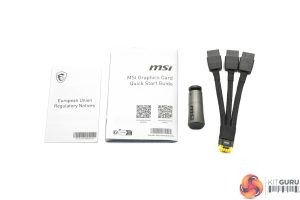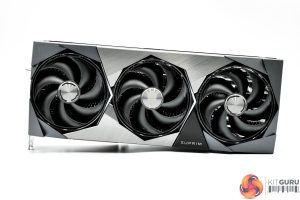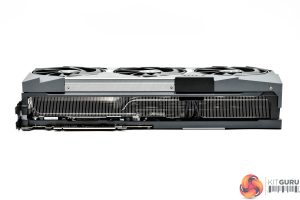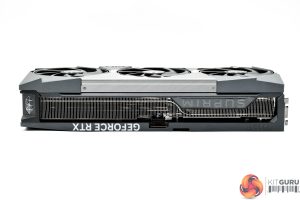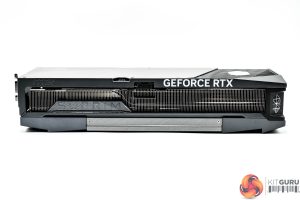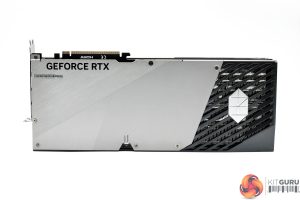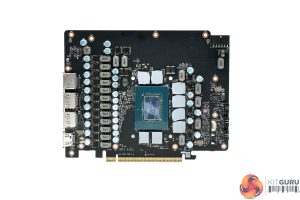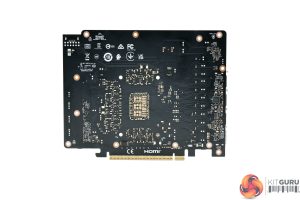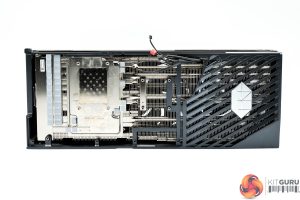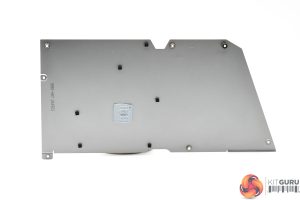As for the MSI RTX 5080 Suprim SOC, this ships in a white box with the Suprim logo visible on the front. On the back, MSI highlights the key features of the card itself.
Inside, MSI includes a couple of leaflets, a small GPU support stand, alongside the triple 8-pin power adapter.
Visually, the graphics card is identical to the RTX 5090 Suprim SOC model we reviewed last week. That means we have the same angular, almost blocky aesthetic, with the shroud comprised of a combination of rigid plastic and some brushed metal sections. It's certainly a good looking card and it's very well built, too.
MSI is using what it calls the ‘Hyper Frozr' thermal design, and that includes three Stormforce fans, each of which measures 100mm in diameter.
Dimensions are identical to the 5090 version, too, coming in at 359 x 150 x 76 mm. The 5080 is a touch lighter though, at 2661g, though that is still very heavy.
The front side of the card is home to the GeForce RTX and Suprim branding – the latter of which acts as one of the card's RGB zones.
As for the backplate, MSI has opted for a single piece of metal that extends about three quarters of the length of the card – the rest is left open to act as a ‘flow through' area, so air can pass directly through the heatsink, to aid cooling performance.
You can also spot the dual-BIOS switch, with a choice of Gaming or Silent modes – both share the same clock speeds, the only difference is the fan curve.
Above you can see the RGB lighting, with the Suprim logos on the side, along with the LED strips either side of the central fan, acting as the RGB zones. MSI Center is used to control the lighting.
As expected, power is delivered by a single 12V-2X6 connector. Display outputs consist of three DP 2.1 and one HDMI 2.1 ports.
Moving onto the PCB, here MSI has opted for a beefy 16-phase VRM for the GPU and a 3-phase memory solution. It's no surprise to see more MPS MP87993 MOSFETs used across the board, and just like the other cards on test today, a Monolithic MP29816 controller is used for the GPU, with a Monolithic MP2988 controller for the memory.
The heatsink is so the same as with the RTX 5090 model. That means no less than eleven heatpipes are used throughout the fin stack, while the GPU and memory contacts with a vapour chamber. Smaller, separate baseplates are used to contact the MOSFETs.
 KitGuru KitGuru.net – Tech News | Hardware News | Hardware Reviews | IOS | Mobile | Gaming | Graphics Cards
KitGuru KitGuru.net – Tech News | Hardware News | Hardware Reviews | IOS | Mobile | Gaming | Graphics Cards




